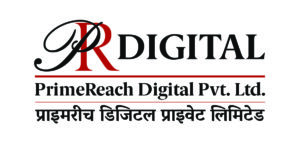
In today’s interconnected world, reaching more customers often hinges on a strong digital presence. Brand awareness serves as the foundation for customer loyalty, and implementing digital strategies effectively can transform potential leads into dedicated clients. In this article, we’ll explore practical and actionable steps to boost your brand awareness digitally.
Introduction to Brand Awareness
Brand awareness is the degree to which consumers recognize and recall your brand in a crowded marketplace. It’s more than just a logo or tagline—it’s the emotional and cognitive association customers form with your business.
Digital strategies amplify brand awareness by enabling you to connect with your audience in meaningful ways. From leveraging social media platforms to crafting engaging email campaigns, these tools allow brands to build visibility, trust, and recognition in a cost-effective manner.
Understanding Your Target Audience
Before diving into strategies, it’s critical to know who you’re targeting.
- Identifying Customer Demographics: Use tools like Google Analytics and surveys to gather insights about age, location, and interests.
- Creating Buyer Personas: Develop profiles of your ideal customers to tailor your messages.
- Understanding Customer Needs and Pain Points: Addressing problems effectively builds a loyal audience.
Developing a Strong Brand Identity
Your brand identity is the beacon that guides customer perception.
- Consistent Brand Voice: Whether playful, professional, or empathetic, ensure your voice aligns with your values.
- Visual Branding: Invest in professional logos and maintain consistent color schemes across all touchpoints.
- Memorable Messaging: Craft a unique slogan or tagline that resonates.
The Role of Social Media in Brand Awareness
Social media platforms are the modern marketplaces for brand building.
- Choosing Platforms Wisely: Identify where your audience spends the most time (e.g., Instagram for younger audiences, LinkedIn for professionals).
- Leveraging Algorithms: Use trending hashtags and engage with users to improve visibility.
- Engaging Content: Post interactive polls, share behind-the-scenes stories, and celebrate milestones.
Content Marketing for Brand Awareness
High-quality content builds authority and trust.
- Blogging: Publish insightful articles that solve customer queries.
- Video Content: Leverage YouTube or TikTok for tutorials, testimonials, and behind-the-scenes footage.
- Educational and Entertaining Content: Share eBooks, infographics, or humorous posts to captivate your audience.
Search Engine Optimization (SEO)
SEO ensures your brand appears where customers search.
- Branded Keywords: Optimize your website with terms unique to your business.
- Local SEO: Register with Google My Business to target local customers.
- Organic Traffic: Create valuable content to rank higher on search engines.
Influencer Marketing and Partnerships
Influencers act as trusted messengers for your brand.
- Finding Influencers: Partner with individuals whose followers match your target demographic.
- Authenticity: Ensure collaborations reflect your brand values.
- Measuring Impact: Use analytics tools to track engagement and ROI.
Paid Advertising Strategies
Paid campaigns offer quick visibility.
- PPC Campaigns: Drive immediate traffic to your website.
- Social Media Ads: Boost posts to reach broader audiences.
- Retargeting: Remind visitors of your brand with tailored ads.
Email Marketing for Brand Awareness
Email remains one of the most direct ways to connect.
- Designing Engaging Emails: Use attention-grabbing subject lines.
- Loyalty Campaigns: Offer discounts and exclusive content to subscribers.
- Personalization: Address recipients by name and tailor content based on their behavior.
Leveraging User-Generated Content (UGC)
UGC fosters trust and authenticity.
- Customer Reviews: Encourage satisfied customers to leave reviews.
- Social Media Challenges: Host contests that incentivize user participation.
- Highlighting UGC: Share photos and testimonials from happy customers.
The Power of Storytelling
Stories create emotional connections.
- Your Brand’s Journey: Share why and how your business began.
- Customer Success Stories: Highlight how you’ve impacted lives.
- Platform Integration: Use Instagram Stories and blog posts to share narratives.
Analytics and Metrics for Measuring Success
Data-driven decisions ensure sustained success.
- Metrics Tools: Google Analytics, SEMrush, and social media insights.
- Adjusting Strategies: Refine campaigns based on data findings.
- KPIs: Focus on reach, engagement, and conversion rates.
Building a Community Around Your Brand
A strong community ensures longevity.
- Online Engagement: Participate in forums and respond to comments.
- Events and Webinars: Host live events to interact directly.
- Loyalty Programs: Reward repeat customers.
Adapting to Trends and Technology
Stay ahead by embracing change.
- AI in Branding: Use chatbots for immediate customer interaction.
- Digital Trends: Explore platforms like Clubhouse or Threads.
- AR/VR: Provide immersive product experiences.
Overcoming Challenges in Digital Branding
- Competition: Focus on unique selling points (USPs).
- Consistency: Maintain quality and message uniformity.
- Negative Feedback: Respond constructively to criticism.
Conclusion and Next Steps
By implementing these digital strategies, businesses can significantly expand their reach and enhance brand awareness. Begin by understanding your audience, building a strong identity, and experimenting with a mix of organic and paid strategies. With patience and consistency, your brand will shine in the digital landscape.





